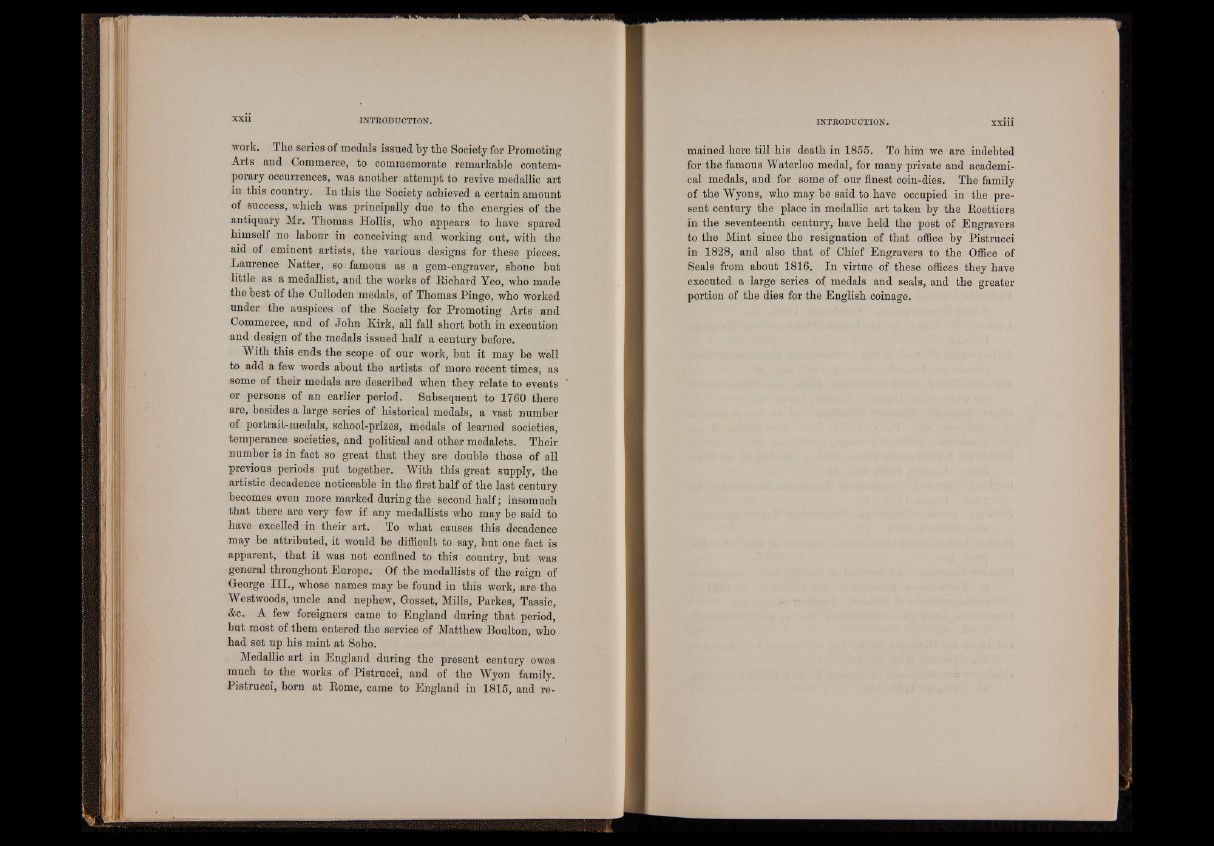
work. The series of medals issued by the Society for Promoting
Arts and Commerce, to commemorate remarkable contemporary
occurrences, was another attempt to revive medallic art
in this country. In this the Society achieved a certain amount
of success, which was principally due to the energies of the
antiquary Mr. Thomas Hollis, who appears to have spared
himself no labour in conceiving and working out, with the
aid of eminent artists, the various designs for these pieces.
Laurence Natter, so famous as a gem-engraver, shone but
little as a medallist, and the works of Richard Yeo, who made
the best of the Culloden medals, of Thomas Pingo, who worked
under the auspices of the Society for Promoting Arts and
Commerce, and of John Kirk, all fall short both in execution
and design of the medals issued half a century before.
With this ends the scope of our work, but it may be well
to add a few words about the artists of more recent times; as
some of their medals are described when they relate to events
or persons of an earlier period. Subsequent to 1760 there
are, besides a large series of historical medals, a vast number
of portrait-medals, school-prizes, medals of learned societies,
temperance societies, and political and other medalets. Their
number is in fact so great that they are double those of all
previous periods put together. With this great supply, the
artistic decadence noticeable in the first half of the last century
becomes even more marked during the second half; insomuch
that there are very few if any medallists who may be said to
have excelled in their art. To what causes this decadence
may be attributed, it would be difficult to say, but one fact is
apparent, that it was not confined to this country, but was
general throughout Europe. Of the medallists of the reign of
George III., whose names may be found in this work, are the
Westwoods, uncle and nephew, Gosset, Mills, Parkes, Tassie,
&c. A few foreigners came to England during that period,
but most of them entered the service of Matthew Boulton, who
had set up his mint at Soho.
Medallic art in England during the present century owes
much to the works of Pistrucci, and of the Wyon family.
Pistrucci, born at Rome, came to England in 1815, and remained
here till his death in 1855. To him we are indebted
for the famous Waterloo medal, for many private and academical
medals, and for some of our finest coin-dies. The family
of the Wyons, who may be said to have occupied in the present
century the place in medallic art taken by the Roettiers
in the seventeenth century, have held the post of Engravers
to the Mint since the resignation of that office by Pistrucci
in 1828, and also that of Chief Engravers to the Office of
Seals from about 1816. In virtue of these offices they have
executed a large series of medals and seals, and the greater
portion of the dies for the English coinage.